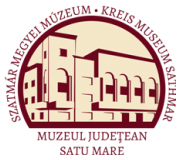Ardelean, Gavril - Buicu, Florin (szerk.): Satu Mare. Studii şi comunicări. Seria ştiinţele naturale 7. (2006)
Medicină
Satu Mare - Studii şi Comunicări Seria Ştiinţele Naturii Voi. VII (2006) costs of different diagnosis categories and their relative value21. Step 1: The identification of the hospital real expenditures. The expenditures were structured in accounting into 10 main accounts: staff expenditures, food, drugs and sanitary materials, maintenance, expenditures for functional materials, expenditures for small objects, small repairs, capital repairs, books and publications, other expenditures. Step 2: The identification of cost centers The hospital departments were divided in 3 cost centers: one intermediary cost center (administrative) and two final cost centers (ancillary and clinical departments). Step 3:The allocation of expenditures to each cost center The hospital expenditures were allocated to the cost centers on the following basis: • staff expenditures, based on effective expenditures towards all 3 types of cost centers • food expenditures, based on in-patient days only to clinical departments • dmgs and sanitary materials, based on effective expenditures towards all 3 types of departments • maintenance, based on surface towards all 3 types of departments • expenditures for functional materials were dividend on two categories: effective and the rest. The effective expenditures for lab. kits were allocated directly towards final cost centers (ancillary and clinical), and the rest of the expenditures based on in-patient days, only to clinical departments • expenditures for small objects, based on inpatient days only to clinical departments • small repairs, based on surface towards all 3 types of cost centers • capital repairs, based on surface towards all 3 types of cost centers • books and publications, based on in-patient days only to clinical departments • other expenditures, based on in-patient days only to clinical departments Step 4 The allocation of intermediary cost center expenditures to final cost centers 21 21 Radu C,P - A cost accounting system pilot project: Patient Level Costs In Cluj University Districtual Hospital Case Mix Project, Public Health Physician, MHA, Institute of Health Services Management, 302 The total expenditures of administrative departments were allocated on a step-down basis towards the final cost centers, in the follow mode: • expenditures of general administration department were allocated based on personnel expenditures, towards all the departments • expenditures of maintenance department were allocated based on number of beds, towards clinical departments • expenditures of kitchen, IT office, and pharmacy were allocated based on number of inpatient days, towards clinical departments Step 5 The cost for each cost object (service) At each final cost center were defined the services provided, which were considered cost objects within each final cost center. The total expenditures of final cost centers (ancillary and clinical departments) obtained as described above were used in costing the services provided by these departments. For this activity were conducted interviews in each department to establish its services and the RVUs for each expenditure category. In order to establish the final cost for the defined services and the final RVUs for the services was used a software (in Excel), adapted to local specific needs. This activity was done for the clinical departments (where it was decided to have cost objects for each patient according with the discharged diagnosis) and for the ancillary departments (where it was decided to use the official reported services as the cost objects). Step 6 The cost of each patient In order to have the patient level costs for each episode of care we made the sum of the following costs produced by a patient during the hospitalization: • costs incurred within the clinical department (determined at step 5) • costs of the ancillary services used during the hospitalization (the costs of the ancillary services calculated on the same principles as the clinical cost objects). Step 7 The patient identification number The final step was to identify the unique Identification number of the patient and to match the costing data with the DRG assignment of the patient. In this way were produced average costs per type of patients and for the DRGs found within these hospital departments.
